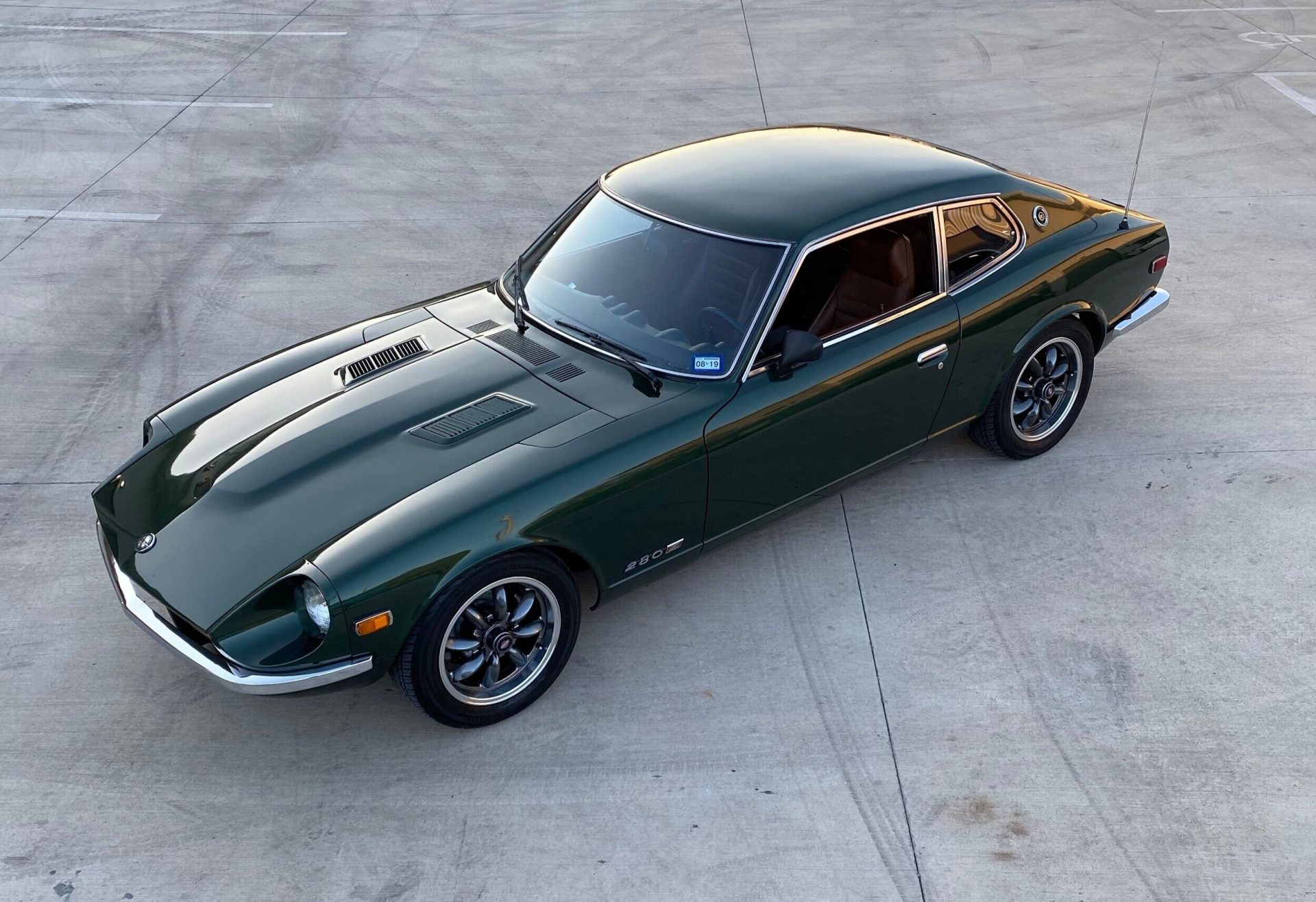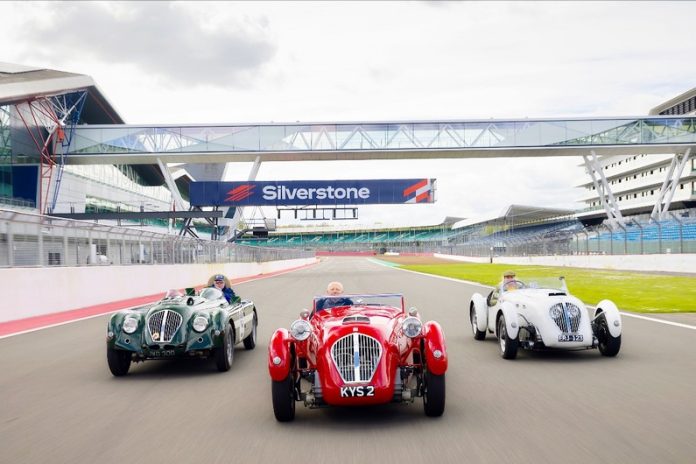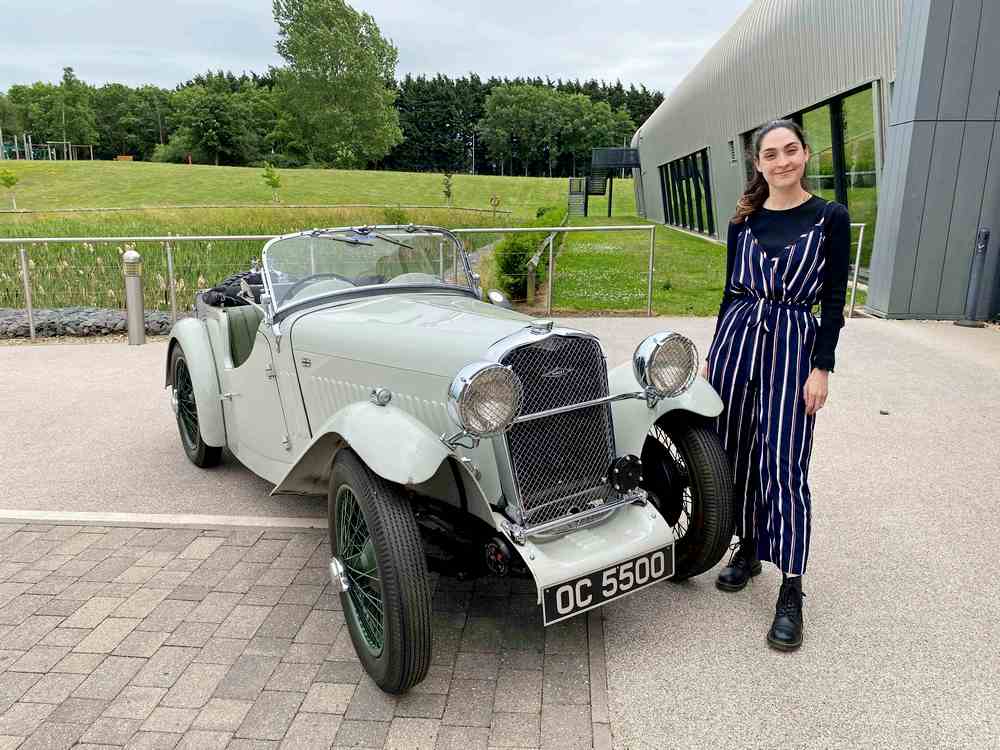Background
For the last twenty years or more, the two, related, issues that have affected and concerned most adults in the world are Global Warming and air pollution. It seems to me that road vehicles and the industry that make them, has received an unequal and unfair level of blame and attention for these “Life on Earth” issues. The reason for this is that the majority of those vehicles are powered by internal combustion engines (i.c.e.) which run on liquid fuel made from irreplaceable oil deposits. When these fuels are burnt in an i.c.e they produce a mixture of gases which are harmful to humans and the environment. Almost universally, the governments of the world’s major economies have decreed that one answer to these problems would be to have all private cars and small commercial vehicles (vans) run on electricity (batteries driving electric motors) by the mid 2030s. Specifically, in the U.K., the Government is currently on course to ban the sale of new cars and vans powered entirely by petrol and diesel by 2030, and to ban the sale of new hybrid vehicles by 2035. From then onwards, new cars and vans sold in the UK must be fully electric. As a matter of interest, in August 2021 electric and plug-in hybrids outsold diesel-engined cars, in Europe, for the first time.
- Alternative fuels
As a little diversion from this electric propulsion themed article – I recently read that Prodrive, the internationally renowned Rally Car preparation company based in Banbury, Oxon., has developed an eco-friendly Bio-Fuel to use in its rally cars. Its first use, in competition, will be in next January’s Dakar Rally when it will power the company’s Hunter T1 + Dakar car. Prodrive hopes its use of eco-fuels in motorsport will demonstrate the feasibility of the fuel in standard production vehicles, as well as giving the technology a global stage on which to highlight the emissions benefits. This sustainable fuel is manufactured from a blend of processed agricultural waste and efuels created by capturing carbon from the atmosphere. Once its rally and Dakar racing pursuits are out of the way, Prodrive also plans to run a near-identical blend of the eco-fuel in some of its road cars and further prove the technology – the firm says the fuel should be compatible with almost any petrol-powered vehicle. Porsche has already started to industrialise the carbon-capturing efuel process, by establishing a new CO2-neutral fuel plant in Chile. Like Prodrive, the German brand will also use its fuel in motorsport first to demonstrate its efficacy. Pipo Moteurs an independent racing engine development company based in the Ardeche department, France, is developing a Hydrogen fuelled (not a Hydrogen cell that Toyota and others are still proceeding with) engine to be used for the first time in the 2023 Dakar Rally.
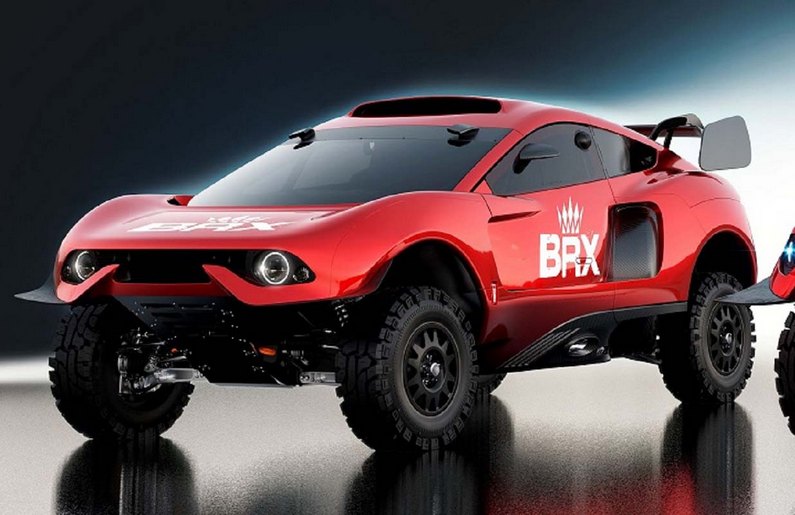
So you can see, there are some powerful minds and companies who haven’t given up on the I.C.E. yet and hope to present eco-friendly derivatives as an alternative to the head-long rush towards eclectic powered vehicles. Since the beginning of the industrial revolution, in the 18th century, technology has developed at an ever increasing pace. It is not always for the better, there may be damaging side effects, coal fired power stations, steam engines and internal combustion engines are exemplars of the dichotomy inherent in these sources of, at the time of their invention, wonderous sources of power. However, mankind also has the intelligence to recognise that mistakes have been made and the ability to correct them. That is the phase we are in now. Personally, I am not yet convinced by the electric powered car proposition for everyday motoring, mainly because of the initial high cost to purchase together with the long time required to fully recharge the battery; this is often inconvenient too. Also, batteries have a finite life and the cost of replacing them (to possibly the second, third or fourth owner of the vehicle) will be exorbitant. However, it has to be accepted that these are probably “current” problems that will have been resolved by the time that all of us have no alternative but to buy an eclectic powered vehicle.
Excerpts from a Federation of British Historic Vehicle Clubs (FBHVC) Newsletter dated 19/11/2020 addressing the Government’s Electric vehicle plans
The Federation recognises there are already a significant number of electric vehicles represented within the historic vehicle community and some examples of these were displayed on the ‘Village Green’ area of the NEC Classic Motor Show in 2019, on the Federation stand. The exhibits included a 1912 Baker Electric Car, 1974 Zagato Zele and a 1940 Moteur Électrique created by the French manufacturer Lucien Rosengart as a direct replacement for the Austin 7 engine he used in the cars built under license in Paris. In the early part of the twentieth century electric vehicles made up a larger proportion of the total vehicles on the road than they do today. In 1900, 20 per cent of cars on the roads in the USA were electric and iconic manufacturers such as Studebaker actually entered the market initially building electric vehicles.
So, we must recognise that electric vehicles have been as much a part of the history and heritage of road transport as they are its future.
The main focus points of the Federation’s activities in light of the announcement of the intended 2030 ban on the sale of new ICE vehicles will be limited to:
a) Ensuring the ban on new vehicles does not extend to restrictions on the use of pre-existing vehicles powered by fossil fuels. In particular, historic vehicles over 30 years old and ‘future historic vehicles’ yet to reach the rolling 30-year classification of historic.
b) Monitoring the effects of changing mainstream consumer demand for petrol and diesel on the accessibility and affordability of fuel supplies for vehicles requiring fossil fuels.
c) Lobbying for the protection of fossil fuel supplies long into the future to service historic vehicles.
The Federation urges caution amongst the historic vehicle community not to ‘panic’ that historic vehicles are in some way about to be made obsolete or unusable as a result of the announcement of these intended UK Government bans. As the 2020 National Historic Vehicle Survey has revealed, there are more than 1.5 million historic vehicles registered in the UK and therefore they represent a material element of our National Heritage. Additionally, the historic vehicle sector contributes a huge £7.2 billion to the UK economy through highly skilled jobs that will be a vital part of the regeneration of the UK’s economy post- pandemic and post- Brexit.
In summary (Ed.) if you are an owner of an older “classic vehicle”, the FBHVC “has your back”. It will be fighting for the maintenance of the supply of petrol throughout the country, in order for you to continue to use your treasured possession on British roads. It has to be assumed that similar actions with be taken by classic car communities, where they exist, in other countries.
Converting classic cars to electric power
In the ‘Background’ above I gave a brief overview as to why the “electrification” of road using vehicles is the current, most frequent, “topic of conversation” in the car owning community. In particular, owners of classic cars, or those who would like to own one, are considering converting their own cars or buying a “classic” that has already been converted. The rest of this article deals with why they might want to do that and how to do it.
Let’s look at some of the positives associated with converting a classic car to electric power. The problems with a lot of classic cars are 1) most of them will have been produced before emissions standards had been established, let alone become as strict as they are now. 2) They can also be extremely unreliable. I have lost count of the number of times I have read reports, in classic car club magazines, of members’ cars breaking down on a club run. Converting a classic car to electric power provides the best of both worlds. You retain the character of the original design (minus the engine noise and gearchanges) whilst gaining greater reliability and in some cases, improved responsiveness.
In the meantime, classic cars converted to electric do come with some financial incentives. Like all classic cars (currently classified in the UK as those built before 8 January 1981), they are exempt from vehicle tax if not used for commercial purposes. Plus, classic car insurance is typically cheap, at least if the vehicle does not do much mileage. However, if you convert your vehicle to electric power you are going to have to inform your insurance provider, and your premium may rise as a result. Unfortunately, converted cars are not eligible for the U.K. Government’s grant of £2500 towards the purchase of a new electric car costing less than £K35.
Many classic cars can be described as being “works of art” either because of the aesthetic beauty of their body designs, the excellence of their mechanical parts, or, both. Even though they were created more than thirty years ago they deserve to be preserved for the enjoyment of not only their owners but for all who encounter them. Museums and events have been established to provide all interested parties with the opportunity to drool over these cars. In recent decades the numbers of “collectors” have increased enormously; by collectors, I mean rich people, who may have a passing interest in cars but who collect and own a number of cars at any one time in the reasonable expectation that they will increase in value. The Classic Car Auctions industry has grown accordingly. I never cease to be amazed at the relatively large number of exotic cars that are traded on, almost, a monthly basis. As one might expect the classic car auction scene is most active in the USA and Europe.
Similar to football (soccer), classic car ownership is divided into a number of divisions. I have just referred to the rich “collectors” who might deal in the likes of Ferarris’, Bentleys, Porsches etc. worth £/$ millions each. These cars only see the light of day either when they are being auctioned or being displayed at some exotic Concours d’Elegance event such as Pebble Beach. CA. or Concorso d’Eleganza Villa d’Este. It. Then we cascade down to the other end, to the real enthusiast with his ubiquitous (in the U.K.) Triumph Stag and 1920s Austin 7s. They are all truly classic cars, loved and treasured by not only their owners but by all who have the pleasure of gazing at them, even if only fleetingly. This website is dedicated to the genre, in all its various forms.
What’s Available?
So, cutting to the chase, if you decided to convert your classic car to electric power, or, to buy a classic car that has already undergone conversion, what’s available? Shown below are some possibilities. Beware, even modest cars are expensive i.m.o.
ELECTRIC CLASSIC CARS
Star of the popular Quest TV series Vintage Classics, Newtown, Powys, Wales, based Richard (“Moggy”) Morgan’s company has and continues to convert a wide range of “classic” cars to electric power. Here are just a few of them –

VW Camper
Power: 71 hp, 120 ft-lbs of torque
Batteries: 36kWh battery pack (standard)
Range: 100 miles depending on driving style and conditions

Porsche 911
Power: 130hp, 213 ft-lbs torque, twin motor setup
Batteries: 54 kWh battery pack
Range: 200 miles depending on driving style and conditions

Range Rover
Power: 130hp, 213 ft-lbs torque, twin motor setup
Batteries: 80 kWh battery pack
Range: 175 – 200 miles depending on driving style and conditions
LONDON ELECTRIC CARS (BL) MINI
London Electric Cars offer a made-to-order electric conversion service that can be catered to any customer’s classic vehicle, but it currently concentrates on Minis, Land Rovers, and Morris Minors/1000s. The car shown above is a 1993 Rover Mini that’s been fitted with the motor and drivetrain from a Nissan Leaf. Built with a 20kWh battery pack shoehorned into the boot/trunk and under the rear seat, it offers up to 70 miles of urban driving. An uprated pack is available which gives a range of around 250 miles. The cost of converting your own Mini is likely to be £20,000 +

SWINDON POWERTRAIN LTD. CLASSIC MINI KIT
Swindon Powertrain Ltd. offers a stand-alone electric 80KW continuous (120KW peak), Classic Mini Kit that can be used in isolation or in combination with a range of aftermarket Swindon Powertrain EV components such as a 12KW/hr. battery pack, motor controller, onboard charger and DC- AC converter. This kit is suitable for classic car enthusiasts, specialists or EV conversion businesses that want to electrify a Classic Mini. The Kit has been designed to ensure that no vehicle modifications are required, the entire Kit weighs just over 70 kg, dry. Prices start at £8,850 + VAT.
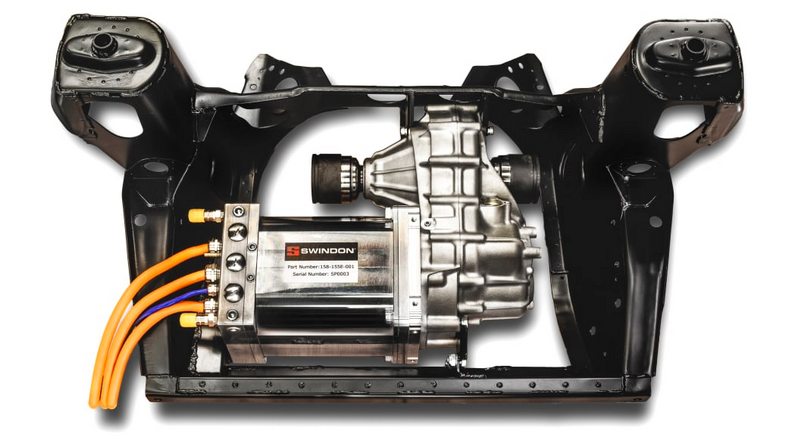
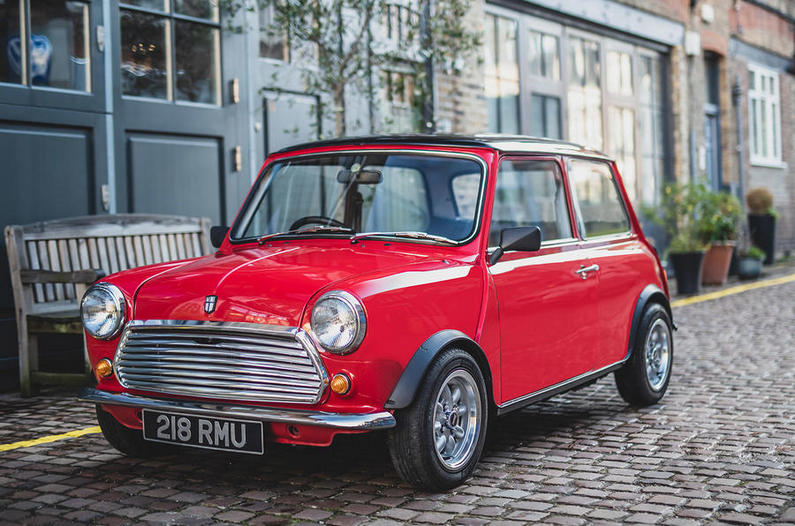
MINI Recharged was conceived at and is sponsored by BMW’s MINI plant in Oxford, U.K. MINI Recharged fits seamlessly into the brand’s future strategy, which also includes the aspect of the circular economy. For this project, no new vehicles are being produced, they are being created from much-loved, existing cars. It allows a classic Mini to begin a second, more sustainable life. Today, one in five new MINI models has an electrified drive and now the MINI Recharged project will allow the love of the brand’s classic vehicles to become an experience combining the past and the future. A new company, Heritage Recharged, has been formed to build and market these rejuvenated Classic Minis.
The bespoke upcycling of the classic Mini is carried out exclusively in the United Kingdom. Each converted vehicle is given an individual number, making it unique. “Individuality also plays an important role with MINI Recharged,” says Sebastian Beuchel, Head of MINI Global Brand Management. “Unique classic Mini models have always been created, including true works of art on wheels. That’s why future collaborations are also planned as part of the MINI Recharged programme, allowing well-known artists to express their creativity with specially designed classic Mini models. The drive is a modern electric motor that generates a continuous outpuof up to 90 kW and accelerates the electrified classic Mini from zero to 100 km/h in approximately nine seconds. The energy is supplied by a high-voltage battery, which can be charged with an output of up to 6.6
kW and enables a predicted range of around 160 kilometers.
Pre-orders are open now, with prices starting from £42,500 for the conversion of an existing car, or £60,000 for car procurement plus conversion. Bespoke commissions are offered on a POA basis. For more information, visit the Heritage Recharged website.

Moment Motors, based in Austin, TX. offer a bespoke electric conversion service although they tend to work on recognised classic cars. Moment uses a modular power system based around single, in-line, and stacked dual-motor configurations, with interchangeable transmission adapters for easy mounting. In addition, they have developed an accompanying battery enclosure setup using reclaimed Tesla modules. Shown below is a converted Datsun 280 Z. The cost of converting a donor Datsun Z is $70,000 +
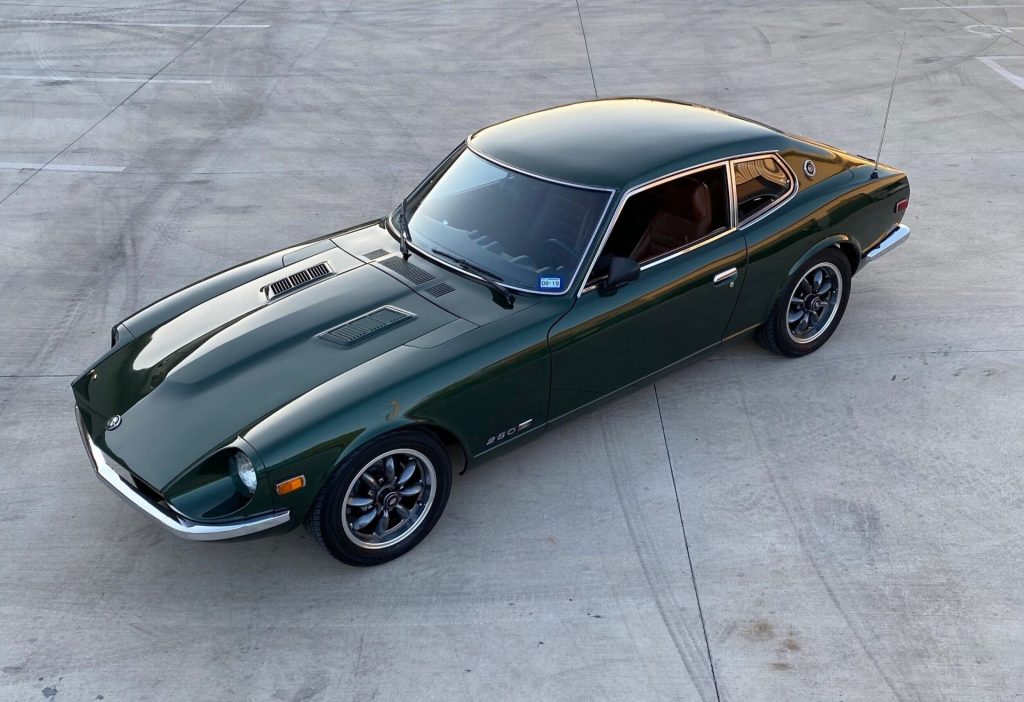
RBW MGB ROADSTER
The managing director of RBW Classic & Sportscars, Peter Swain, had owned several British sportscars, including MGBs and respected their place in automotive history around the world. He wanted to preserve these cars’ relevance in the modern motoring scene. To this end, he established RBW Electric with the idea of building “new” cars using electric power in place of the original I.C.E. One of the first cars to be built was an MGB Roadster, similar to the one shown below. The word “new” is important because these RBW cars are rebuilt from the ground up using British Motor Heritage body panels. Interior trim is taken care of by specialist, Protrim. The interior specification includes a WiFi-enabled Pioneer navigation system, a 7-inch color touchscreen, and electric windows plus a number of other detailed features. Power is supplied by a 70kW Continental Engineering Services (CES) motor and six Hyperdrive Li-Ion batteries. This package provides a range of 160 miles, 0 – 60 mph time of 9.0seonds and a top speed of just under 90mph. At a cost of £108,000 it is a significant investment in the future of the motor car!

E.C.D. ELECTRIC DEFENDER
E.C.D. Automotive Design has established an enviable reputation for its customised Land Rover Defender range of cars. It has now added an eclectic conversation to that range. it is powered by a 450hp drivetrain taken from a Tesla platform. This is capable of giving a 220 miles range from a single 10 hour charge. With this package, it will get to 60mph in a blistering 5.5s. If that isn’t enough an upgrade is available which produces 600 bhp and hurls the Defender to 60 mph in 3.5 seconds. Both versions come complete with upgraded suspension, downhill assist, traction control, and regenerative braking. The cost of converting a donor Defender is likely to be $170,000 +

EVERRATI PORSCHE 911 964
Everrati Automotive, based in Upper Heyford, Oxfordshire, U.K., plans to convert a range of iconic classic cars to electric power. The launch car is a Porsche 911 (964 version), it is available in both narrow and widebody specifications. The car is first fully restored by Porsche specialists, after which it’s fitted with a 53Kwh battery pack, a 440-500hp electric motor, and a custom Quaife ATB Torque biasing differential. This package is capable of taking the 911 to 60mph in less than four seconds while still providing a milage capability of over 150 miles. Interior equipment includes heated seats, Bluetooth, and Apple Car Play. The cost of converting a donor car would be around $280,000 +

VOITURES EXTRAVERT QUINTESSENZA
At this time the 911-based Quintessenza is the only model offered by the Helmond, NL. based Voitures Extravert company. However, it is available in either Coupe or Targa configurations, in both 60s-inspired SE and 80s-inspired TE trim levels. The build process takes about nine months to complete, during which the donor car is stripped to the bare metal, painted with a zinc-protected coating, and then completely rebuilt. The original fuel tank is replaced by a 250-mile range 59kWh battery which, via an industrial capacity electric motor, propels the car to 60 mph in 6.0 secs, 2.7 sec quicker than the original! The rebuilt 911 is equipped with custom-built adjustable suspension, power steering, aircon, and a state-of-the-art sound system. But at $340,000 you would probably expect that!
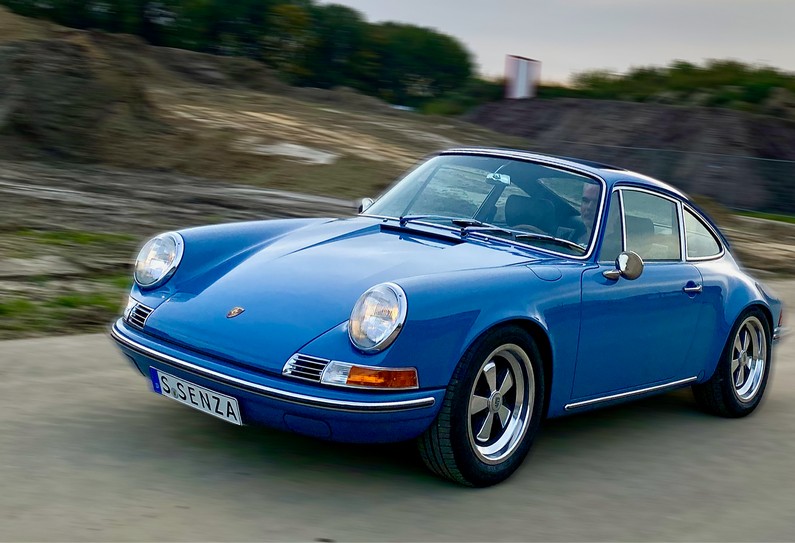
CHARGE CARS FASTBACK MUSTANG
You would be justified in thinking that Ford’s latest Mustang Mach E is all you would ever want as far as an electrified Mustang is concerned. However, if the classic styling of the original Mustang Fastback is more to your liking then London, U.K. based Charge Cars is the supplier to go to. Similar in concept to the RBW MGB. Charge’s Mustang uses new, officially licenced, Mustang body shells. Power is supplied by a dual-motor four-wheel-drive setup with a 64 kWh battery pack. This package produces 536hp and 1,106lb-ft of torque which propels the car to 60mph in less than 4.0s whilst providing a respectable range of 200 miles. Charge retains the Mustang Fastback’s retro styling for the interior but adds a large touchscreen interface which enables the driver to select, among other things, the ride quality. Charge Cars plan to make only 499 of these electric Fastback Mustangs so you’ll have to reserve one soon if you want one in your own garage. And the price? $450,000+
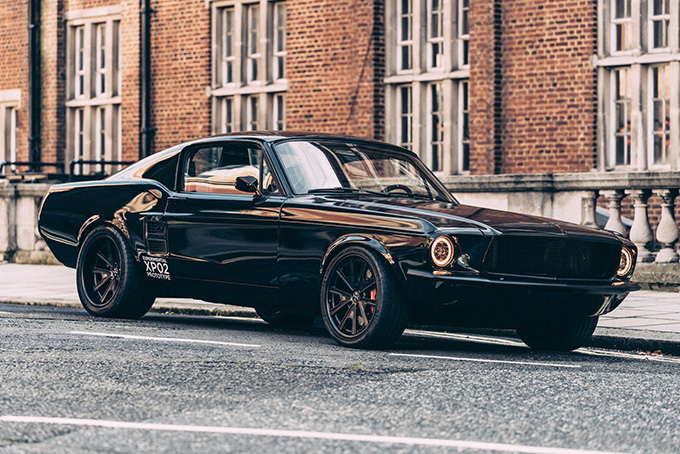
HEMMELS MERCEDES 280SL PAGODA
Hemmels are Mercedes Benz restoration specialists based in Cardiff, Wales, U.K. They have recently added this electrified 280 SL Pagoda to their range. The conversion components are supplied by Swindon Powertrain Ltd. Blending the finest in elegance and engineering, the Mercedes-Benz Pagoda has captivated admirers for decades. Now Hemmels empowers this legend to thrive in the 21st century. We are very proud to announce an all-electric ’Pagoda’, which transcends this icon into a modern luxury automobile, yet preserves its timeless allure. Ready for you to style as you have dreamed, The Hemmels 280SL Electric is now available to pre-order, in limited quantities. No performance figures are available but the cost, in addition to the supply of a donor car, is $289,000.
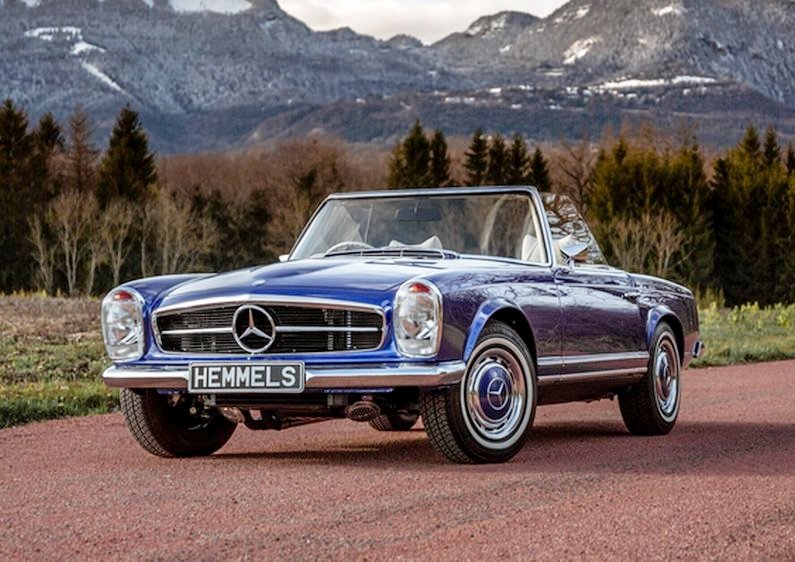
LUNAZ DESIGNS ASTON MARTIN DB6
British firm Lunaz has future-proofed the Aston Martin DB6 with an electric powertrain. The ‘reimagined’ classic comes with a 80-120kWh battery, CCS fast-charging capability and a 255-mile range. Currently, Lunaz is focusing on electrifying homegrown icons, including the Range Rover Classic, original Bentley Continental, Jaguar XK120 and Rolls-Royce, Phantom V and Silver Cloud. The new Aston Martin DB6 is said to ‘complete the line-up of British pinnacle marques’. The conversion process starts with a bare-metal restoration. The internal combustion engine – in this case, a 4.0-litre straight-six – is removed and stored, in case a buyer ever wants to return their car to standard spec. Lunaz then installs batteries, inverters and electric motors from an undisclosed ‘European tier 1’ supplier. As befits the original tradition of Rolls Royce and Aston Martin, performance figures are not provided. However, Lunaz promises ‘brisk initial acceleration’ with the ‘instant torque and silent delivery of an electric powertrain’. Combined with uprated steering, brakes and suspension, the DB6 should be a fast and comfortable grand tourer – just as Aston Martin intended. What is indicted though is the price, which is likely to be £900,000 +
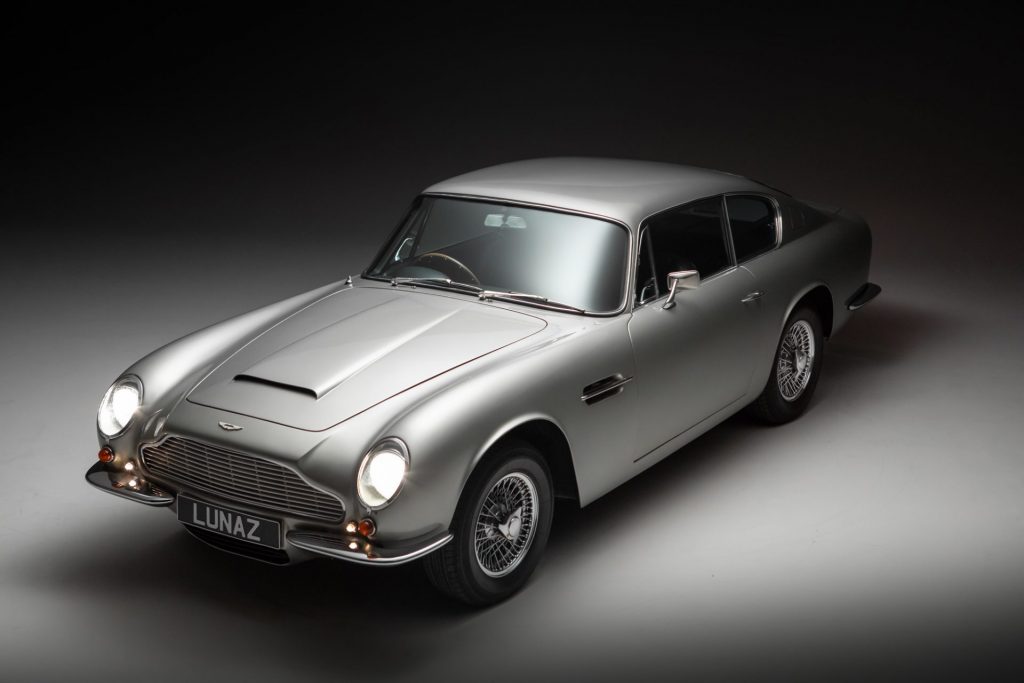
TOTEM AUTOMOBILI GIULIA GT
This Electromod Guilia GT is from a young Italian company, Totem Automobili, located to the north of Venice Italy. It is clearly a tribute to the iconic 1960s Giulia GTA. It takes 6,000 man-hours, spread amongst 21 engineers, nine expert craftsmen, and 150 different Italian parts suppliers to produce this fabulous tribute car. Only ten per cent of the original car’s underpinnings are retained, instead, it uses a bespoke steel platform with an integrated roll-bar and MacPherson struts front suspension. Power comes via an 81 kWh battery pack supplying a proprietary electric motor giving 590hp and 811 lb-ft of torque. That’s enough to propel this carbon fibre bodied car from 0 – 62 mph in an electrifying 2.9 seconds with a range of 240 miles. However, to buy this level of technology and performance you will have to shell out around $510,000 +

RETRO ELECTRIC
This company claims to be able and willing to convert any Classic Car to electric power. Its website features, Fiat (classic) 500, VW Beetle and Land Rover (classic) Defender. Here is the Fiat 500 and this is what Retro Electric says about it –
An electric classic Fiat 500 epitomises Italian life – Sun, Brio and the Dolce Vita. Nothing says good times like an electric Fiat 500. We have created a unique electric conversion service for the classic Fiat 500. Now with options for both a small or larger battery pack – you can enjoy driving this car for longer too.
Battery Range – Battery pack options exist for either 80 mile range (16 kWh) or a larger 100 mile range (21 kWh). We split the pack weight front and back to keep the weight balanced.
For all our classic car electric conversions, we ensure the original vehicle’s aesthetics and intrinsic design features are maintained. Our electric Fiat 500 build has a hidden charge port behind the rear number plate. Only visible when you are charging. Prices start at £25,000 depending on the base vehicle that is coverted.

DIY (from the Crate) Kits
There is an increasing number of companies offering electrification kits to skilled owners of cars who want to convert their own cars. These kits are also available to garages/dealers who want to offer their own branded cars or conversion service. Personally, I think that this is the most interesting area of the vehicle electrification subject. In my view, this is where the real demand will come from purely because it will appeal to owners or dealers in “budget” classics. Here is just one example of such a supplier –
In October 2012 I was contacted by Gary White of Vital Spark, a Warwickshire based company that converts, mainly classic, cars to electric power. Gary had read my article on ‘Replica Classic Cars’ and wanted to inform me that his company had bought the assets of Sebring International which had been dormant in recent years. Gary’s intention is to re-launch the Sebring brand as an electric powered car both in kit form and fully built. We wish you well Gary and will watch with interest how the project develops. See the link at the bottom of this page.
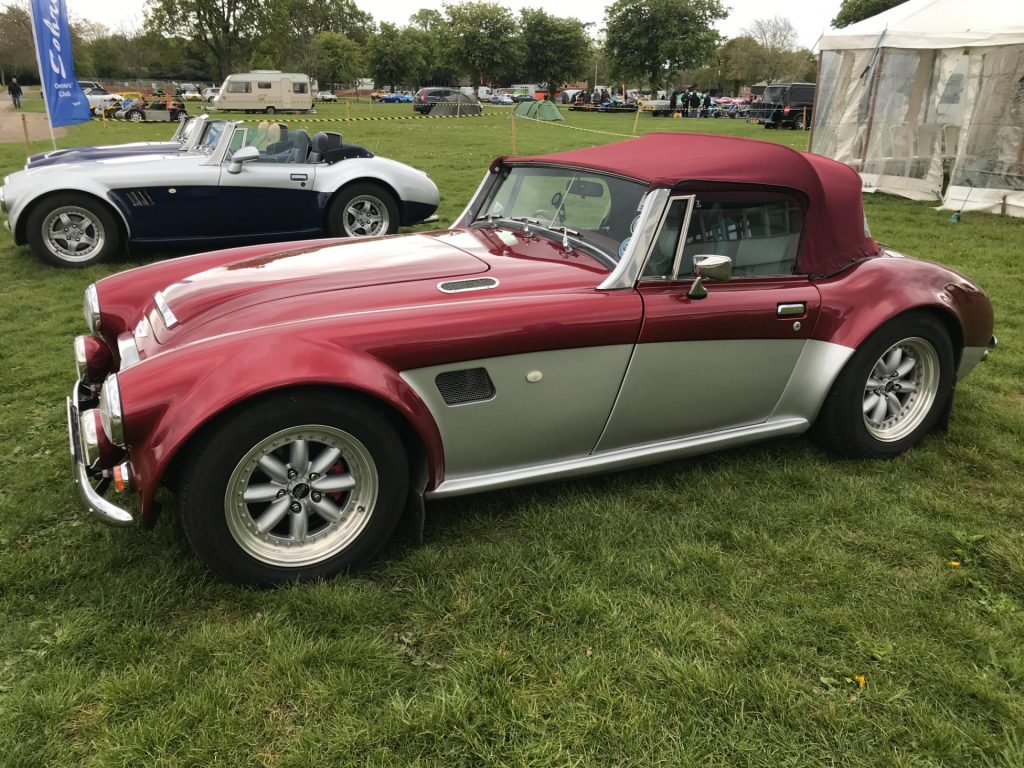
Summary
I conceived this article as a follow-on to the ones I have written on ‘Replica Cars’ and ‘Restomods’. I couldn’t fail to be conscious of the classic car world’s consternation, bewilderment and even excitement, as regards the legislation passed by governments, around the world, decreeing that from a certain date all new vehicles sold will be powered by electricity. So, I thought that I should have a look at what impact these changes will have on ‘Classic Cars’. I have tried to do that in this article but tried is the operative word; what I have written gives only a snapshot of the whole, many-faceted, picture. I hope that you have found the article stimulating and entertaining. The one thing that stands out for me, concerning many of the converted classics featured, is their cost. As I have said in the piece, the prices being asked for some of these electrified classics places them in the same bracket as high-end cars, sold at auction, which will be kept in private collections and rarely see the light of day. On the other hand, maybe it is that I just do not move in circles where these cars will be used to the full advantage of their newly acquired electric power packs. I truly hope that is the case.
Nick
Links –
Charge Cars – https://charge.cars/
ECD Auto Designs – https://ecdautodesign.com/electric-defender/
Electric Classic Cars – https://www.electricclassiccars.co.uk/
Everrati – https://www.everrati.com/works/porsche-911-964/
Hemmels – https://www.hemmels.com/mercedes-benz-280sl-electric
Heritage Recharged – https://rechargedheritage.co.uk/
London Classic Cars – https://www.londonelectriccars.com/
Lunaz Design – https://lunaz.design/cars
Momentum Motors – https://www.momentmotors.com/cars
RBW Cars – https://rbwevcars.com/models-rbw-roadster-gt/
Retro Electrics – https://www.retroelectrics.co.uk/
Swindon Powertrain Ltd. – https://swindonpowertrain.com/
Totem Automobili – https://www.totemautomobili.com/
Vital Spark – https://www.vital-spark.io/home
Voitures – Extravert – https://www.voitures-extravert.com/
I would also like to give credit to Gray Van Dyke of HiConsumption.com for the inspiration that he gave me for this article.
Related articles –
© carsceneinternational.com


